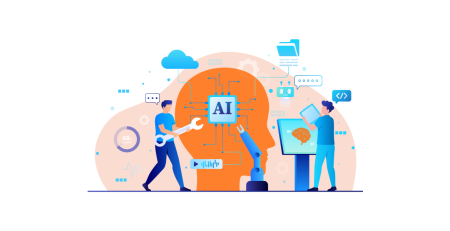Manual vs. Automated Software Testing
Which is preferable, human or automated testing? We get this question a lot, and our answer is usually the same: human and automated testing aren’t rival methodologies; they complement each other well. Determine what your strategy should be in order to get the most out of each form of testing.
Therac-25 was a radiation therapy equipment that rose to prominence for all the wrong reasons. Several individuals were given large doses of radiation between 1985 and 1987. Three patients died after getting almost 100 times the planned dose, and several others were severely damaged.
NASA’s Mars climate orbiter crashed almost immediately after arriving on the destination planet in 1999. In a single second, $327 million and a one-year journey were squandered.
One thing connects these two mishaps. They were both caused by a software bug that was not found in time.
According to a study conducted by the Department of Commerce’s National Institute of Standards and Technology, software failures cost the US economy an estimated $59.5 billion each year (NIST). According to the same report, improved testing may have saved $22.2 billion.
Even if your software does not have the ability to kill people, every single defect can degrade the user experience and cost you money after money. To limit the negative impact, you should consider software testing.
What is software testing and why is it important?
“Software testing is an inquiry done to provide stakeholders with information about the quality of the software product or service under test,” according to Wikipedia.
In other terms, testing is the process of examining software for errors or flaws.
In reality, no software can be written without bugs, and this reflects poorly on the developers’ professionalism. Bugs are an unavoidable “side effect” of software development. The only way to get rid of them is to reduce the application’s functionality.
However, this is not an excuse to simply accept bugs and watch as they destroy your application. The majority of defects may be discovered and eliminated during the development stage, before the program is released to actual users.
Our message is unequivocal. Don’t try to create a bug-free product. Aim to reduce bugs that will have a significant impact on the user experience.
Manual Testing vs. Automated Testing
There are two methods for ensuring that the program will function properly and without critical errors: manual testing and automated testing.
Manual testing is a process in which the tester acts as the end user and manually executes all test cases. It is critical to anticipate all possible end-user actions and ensure that the software responds appropriately to these actions.
Automated testing eliminates the need for the tester to manually navigate the program. An automated testing tool, on the other hand, will run all of the preset test cases, comparing the predicted software response to the actual response.
Any project can include both human and automated testing; nevertheless, the best testing technique depends on the project. It’s critical to strike a balance between manual and automated testing.
Features of manual software testing
Manual testing necessitates the tester assuming the role of the intended program user. The tester’s activity with the app should closely mimic the user’s behavior. As a result, a thorough understanding of the target audience is essential. Furthermore, there are several factors to consider when selecting manual testing.
The real human behavior
Manual testing allows you to perform actions with the software that the testing tool cannot predict or imitate. At the same time, consumers are prone to take them. You will also obtain genuine customer input on the software’s UX, which is extremely valuable.
Simultaneously, the human aspect is a significant disadvantage. Because of the monotony of the process, the tester may become less attentive, resulting in some minor (or even major) defects being missed.
Time and cost efficiency
Manual testing is ideal when you simply need to test the app once and don’t have time to prepare by developing test cases. Furthermore, you save a lot of money on testing tools.
If, on the other hand, the program is often modified, the same test cases must be run repeatedly. Manually accomplishing this would take a large amount of time. Once written, automated test cases can be reused for each update testing.
Flexibility
Manual software testing provides a great deal of flexibility. The tester can immediately adjust the testing strategy or test any notion. In comparison, automated testing is less adaptable because changes to the testing procedure can be time-consuming.
This is not possible during automated testing because all test cases are pre-written and cannot be changed or added during the testing process.
Features of automated software testing
Prior to performing automated testing, the tester must define the use cases that the tool will audit. As you might expect, automated testing software mimics real-world user actions and compares the app’s actual response to the expected one.
More exact than a human tester
The human component is one of the drawbacks of manual testing. Software will never make mistakes due to insufficient testing or a lack of attention (unless there is a bug:)). As a result, automated testing is more precise and allows for the detection of more bugs.
However, automated testing cannot assess the usability of a website or app. Manual testing, on the other hand, produces more precise results when testing the user interface.
Higher productivity
Manual tests are several times slower than automated tests. They can also run unattended, allowing testing to take place overnight, or several applications can be tested concurrently. However, setting up automated testing takes more time.
Reusable test cases
This is critical for frequently modified software. The test scripts, once written, can be reused as many times as needed.
Expenses for automated testing tools
Automated testing tools are typically costly, but they are a sound long-term investment. They are ideal for applications that must be tested often.
They are, however, not a good solution for one-time testing. The preparation of the use-cases may take longer than the manual testing. When you consider the cost of automated testing tools, you can see how much money can be wasted if you don’t analyze the case before deciding on a testing strategy.
Results sharing
Manual testing often involves one person who conducts the test and views the results. For larger teams, automated testing is preferable since the system saves all test results and allows them to be shared with everyone participating in testing and bug fixing.
Different testing approaches for different tasks
Which is more effective, human or automated testing? This query, I’m afraid, will go unanswered. Both methods of testing are useful, but they serve quite distinct purposes.
When should manual testing be used?
User interface testing
As previously stated, a machine cannot test some subjective things. It will not notify you if something is amiss with the usability of your website or app. Is the font size adequate for reading? Is it obvious which button to select? Only manual testing can provide answers to these and many other similar questions. Subjective tests require the response of a human, not a machine.
One-time testing
Have a final version of the app that you’d like to test before releasing it? Creating test cases for automated testing would take far too much time and effort. Besides, you’ll never need them again. Manual testing, on the other hand, is efficient, does not require any preparation, and allows you to test the app from the end user’s perspective.
Lack of specialized software or skilled quality assurance specialist
Because the QA engineer must write code to execute the test cases, automated testing necessitates prior experience and programming skills. Furthermore, specific tools are necessary. If either of these is missing, go with manual testing. It is possible to complete the task without the use of any additional tools, and the tester does not need development experience.
When to use automated testing?
Functionality testing
Although software features, speed, and loading can be tested manually, automated testing may be more efficient and precise.
Regression testing
For software that is under development and constantly updated, automated testing is a must. Once written, the test cases can be reused without significant changes after each software update, saving time and, of course, lowering testing costs.
Load testing and performance testing of complex software
It is difficult to manually test software that is intended to be used by millions of users at the same time. On the contrary, automated testing is a useful tool because it allows you to simulate any number of users at the same time.
Working in a large or remote team
Teamwork frequently necessitates continuous communication and sharing of current progress, which is frequently impossible with manual testing. The system saves automated testing results, which can then be shared with anyone on the team, even if they are on another continent. This is ideal for remote collaboration.
Conclusion
Even hiring the best developers will not guarantee that your code is bug-free. Mistakes are an unavoidable aspect of the software development process.
To eliminate programming flaws, both manual and automated software testing can be utilized. These are not opposing viewpoints, and neither is superior to the other. Indeed, manual and automated testing can complement each other, allowing you to choose the best approach for a given problem.
Manual testing is the best solution for UI auditioning because it allows the tester to pretend to be a potential user of the software and discover all the nuances and flaws that automated testing software may miss.
Functionality necessitates deeper testing, and automated testing is the best option for this due to its increased precision and speed. Preparing test cases for a specific piece of functionality, on the other hand, can take up to three times as long as testing manually. As a result, when a recurring test is necessary, automated testing is the ideal solution.
It is critical to find the correct balance of automated and manual testing. Together, they form a potent weapon against costly bugs that degrade the quality of your software.













Leave a Reply